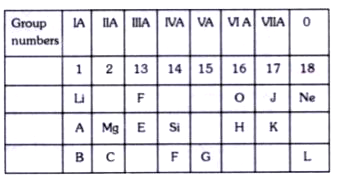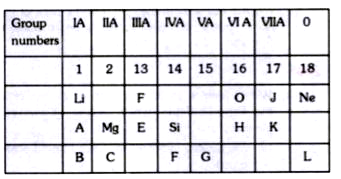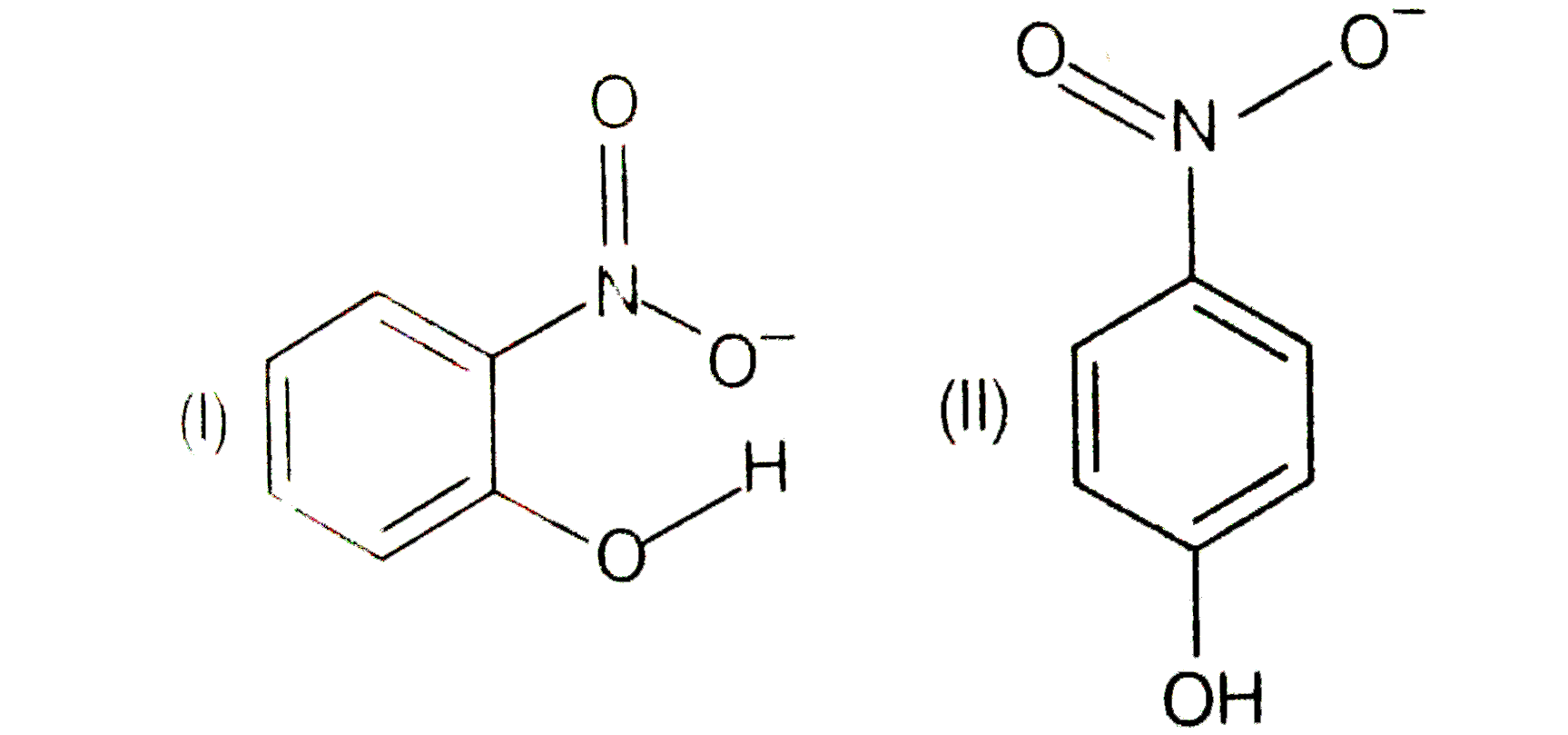a. "Stability of a crystal is reflected in the magnitude of its melting points" Comment.
b. Melting points of some compounds are given below water =273K, ethyl alcohol =153.7K, diethyl ether =156.8K, methane =90.5K. What can you say about the intermolecular forces between the molecules of these compounds?
Ionic compounds have high melting points. There is a strong force of attraction between the oppositely charged ions, so a lot of heat energy is required to break this force of attraction and have high melting points. The force of attraction between the molecules of a covalent compound is very weak. Only a small amount of heat energy is required to brea these weak molecular forces, due to which covalent compounds have low melting points.
b. i. The intermolecular forces in H2O and C2H5OH an H-bonding. Higherr melting points of H2O than C2H5OH shows that H-bonding in H2O molecules is stronger than C2H5OH molecules.
ii. Diethyl ether is a polar molucule. The intermolecular forces ar dipole-attarction.
iii. CH4 is non-polar molecular having weak van der waal's forces (London dispersion forces).
Topper's Solved these Questions
- NCERT BASED EXERCISEBOOK - CENGAGE CHEMISTRY ENGLISHCHAPTER - NCERT BASED EXERCISEEXERCISE - Short Answer Type Questions
69 Videos
- NCERT BASED EXERCISEBOOK - CENGAGE CHEMISTRY ENGLISHCHAPTER - NCERT BASED EXERCISEEXERCISE - NCERT Exercise
104 Videos
- NCERT BASED EXERCISEBOOK - CENGAGE CHEMISTRY ENGLISHCHAPTER - NCERT BASED EXERCISEEXERCISE - Nuclear Chemistry (NCERT Exercise)
29 Videos
- GRIGNARD REAGENTS AND ORGANOMETALLIC REAGENTSBOOK - CENGAGE CHEMISTRY ENGLISHCHAPTER - GRIGNARD REAGENTS AND ORGANOMETALLIC REAGENTSEXERCISE - Exercises Archives (Linked Comprehension)
1 Videos
- NUCLEAR CHEMISTRYBOOK - CENGAGE CHEMISTRY ENGLISHCHAPTER - NUCLEAR CHEMISTRYEXERCISE - Archives Subjective
13 Videos
Similar Questions
a. "Stability of a crystal is reflected is reflected in the magnitude of its melting points" Comment.
b. Melting points of some compounds are given below water =273K, ethyl alcohol =153.7K, diethyl ether =156.8K, methane =90.5K. What can you say about the intermolecular forces between the molecules of these compounds?
View SolutionUse the information and data given below to answer the question (a) to (c),
Stronger intermolecular forces result in higher boiling point.
Strength of London forces increases with the number of electrons in the molecule.
Boiling point of HF,HCl,HBr and HI are 293 K, 189 K, 206 K and 238 K respectively.
(a) which type of intermolecular forces are present in the molecules HF,HCl,HBr and HI ?
(b) Looking at the trend of boiling points of HCl,HBr and HI, explain out of dipole-dipole interaction and London interaction, which one is predominant here.
(c) Why is boiling point of hydrogen fluoride highest while that of hydrogen chloride lowest ?
View SolutionConsider the section of the periodic table given below.
Note: In this table, B does not represent boron
C does not represent carbon
F does not represent fluorine
H does not represent hydrogen
K does not represent potassium
You must see the position of the element in the periodic table.
Some elements are given in their own symbol and position in the periodic table, while others are shown with a letter. With reference to the table:
Write the formula of the compound between B and H.
View SolutionConsider the section of the periodic table given below.

Note : In this table B does not represent boron
C does not represent carbon
F does not represent fluorine
H does not represent hydrogen
K does not represent potassium
You must see the position of the element in the periodic table.
Some elements are given in their own symbol and position in the periodic table, while others are shown with a letter. With reference to the table:
Write the formula of the compound between B and H.
View SolutionConsider the section of the periodic table given below.

Note : In this table B does not represent boron
C does not represent carbon
F does not represent fluorine
H does not represent hydrogen
K does not represent potassium
You must see the position of the element in the periodic table.
Some elements are given in their own symbol and position in the periodic table, while others are shown with a letter. With reference to the table:
Draw the electron dot structure for the compound formed between C and K.
View SolutionConsider the section of the periodic table given below.
Note: In this table, B does not represent boron
C does not represent carbon
F does not represent fluorine
H does not represent hydrogen
K does not represent potassium
You must see the position of the element in the periodic table.
Some elements are given in their own symbol and position in the periodic table, while others are shown with a letter. With reference to the table:
In the compound between F and J, what type of bond will be formed?
View SolutionConsider the section of the periodic table given below.

Note : In this table B does not represent boron
C does not represent carbon
F does not represent fluorine
H does not represent hydrogen
K does not represent potassium
You must see the position of the element in the periodic table.
Some elements are given in their own symbol and position in the periodic table, while others are shown with a letter. With reference to the table:
In the compound between F and J, what type of bond will be formed ?
View SolutionStructures of molecules of two compounds are given below.

a) Which of the two compounds will have intermolecular hydrogen bonding and which compound is expected to show intramolecular hydrogen bonding?
b) The melting point of compound depends on, among other things, the extent of hydrogen bonding. On this basis explain which of the above two compounds will show higher melting point?
c) Solubility of compounds in water depends on powers to form hydrogen bonds with water. Which of the above compounds will form hydrogen bond with easily and be more stable in it?
View SolutionThe electrical resistance in ohms of a certain thermometer varies with temperature ac cording to the approximate law: R=R0[1+α(T−T0)]
The resistances is 101.6Ω at the triple-point of water 273.16K, and 165.5Ω at the normal melting point of lead (600.5K). What is the temperature when the resistance is 123.4Ω?
View SolutionProperties such as boiling point, freezing point and vapour, pressure of a pure solvent change Propeties such as boiling point, freezing point and vapour, pressure of a pure solvent change when solute molecules are added to get homogeneous solution. These are called colligative properties. Applications of colligative properties are very useful in day-to-day life. One of its examples is the use of ethylene glycol and water mixture as anti-freezing liquid in the radiator of automobiles.
A solution M is prepared by mixing athanol and water. The mole fraction of ethanol in the mixture is 0.9
Given Freezing point depression constant of water (Kwaterf)=1.86Kkgmol−1
Freezing point depression constant of ethanol (Kethanolf)=2.0Kkgmol−1
Boiling point elevation constant of water (Kwaterb)=0.52kgmol−1
Boiling point elevation constant of ethanol (Kethanolb)=1.2kgmol−1
Standard freezing point of water =273 K
Standard freezing point of ethanol = 155.7 K
Standard boiling point of water =373 K
tandard boiling point of ethanol =351.5 K
Vapour pressure of pure water =32.8 mmHg
Vapour presure of pure ethanol =40g Hg
Molecular weight of water =18gmol−1
Molecules weight of ethanol =46gmol−1
In answering the following questions, consider the solutions to be ideal dilute solutions and solutes to be non-volatile and non-dissociative.
when solute molecules are added to get homogeneous solution. These are called colligative properties. Applications of colligative properties are very useful in day-to-day life. One of its examples is the use of ethylene glycol and water mixture as anti-freezing liquid in the radiator of automobiles.
A solution M is prepared by mixing athanol and water. The mole fraction of ethanol in the mixture is 0.9 The freezing point of the solution M is
View Solution
